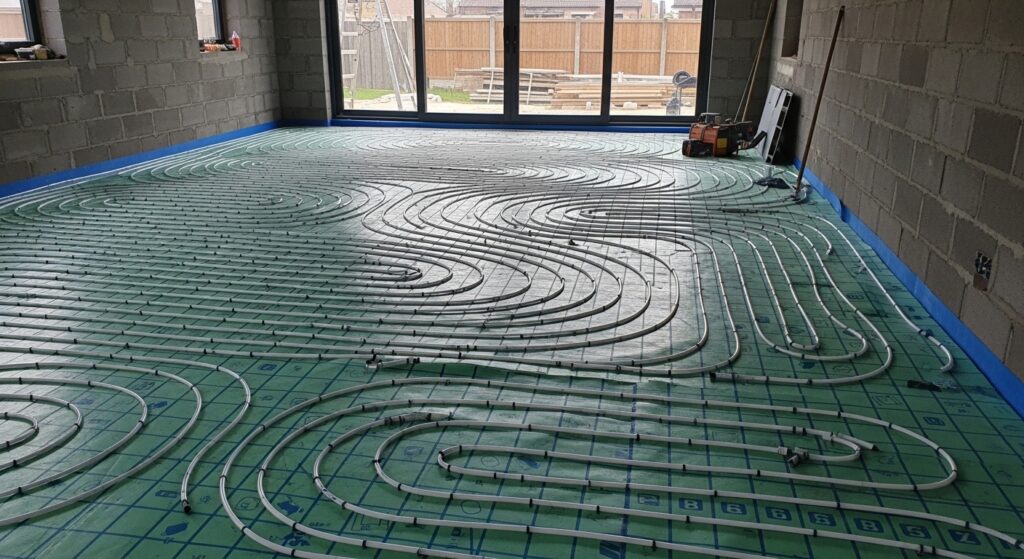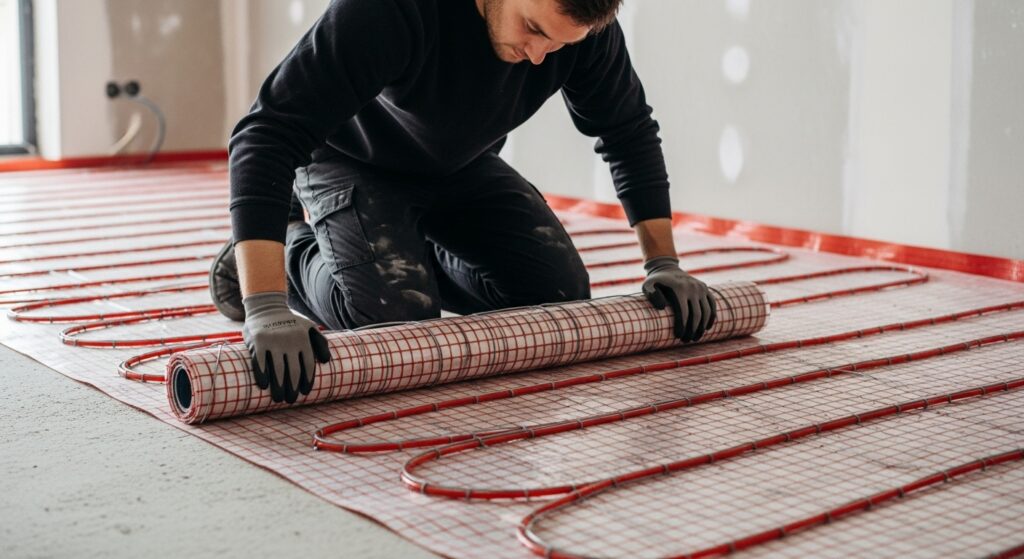A well-installed system should last for years with minimal issues. Yet many homeowners face unexpected repairs, not because of wear and tear, but due to mistakes made during installation. Whether it’s heating, plumbing, or electrics, improper installation can shorten lifespan, increase energy costs, and cause repeated breakdowns.
To help homeowners avoid these pitfalls, here are the most common installation mistakes professionals encounter—and how to prevent them.

1. Poor System Sizing
One of the biggest mistakes is choosing equipment that isn’t the right size for the property.
- Boilers and Heating Systems: A unit that’s too small struggles to keep up with demand, while an oversized system cycles on and off unnecessarily, wasting energy and wearing out components.
- Air Conditioning and Ventilation: Undersized units won’t cool effectively, while oversized ones lead to uneven temperatures and higher running costs.
- Pipes and Wiring: Incorrectly sized pipes cause poor water flow and pressure, while undersized wiring is a fire hazard.
Prevention Tip: Always have a qualified installer perform detailed calculations, such as heat-loss assessments for boilers or load calculations for electrics, before choosing equipment.
2. Skipping Proper Preparation
Rushing into installation without assessing the space is another common mistake.
- Failing to check insulation means heating systems have to work harder.
- Not assessing floor levels before underfloor heating installation can cause uneven heat distribution.
- Skipping site surveys leads to pipework clashes, wiring problems, or poor equipment placement.
Prevention Tip: A thorough site survey should always precede installation. Preparation saves time, money, and frustration later.
3. Incorrect Pipework or Wiring Layout
Installers sometimes take shortcuts, resulting in poor layouts that cause future problems.
- Plumbing: Sharp bends in pipework, poor jointing, or inadequate support can lead to leaks or reduced water pressure.
- Heating: Poor radiator placement or badly spaced UFH pipes create cold spots.
- Electrics: Overloaded circuits or improper cable runs increase the risk of overheating and faults.
Prevention Tip: Work should always follow manufacturer guidelines and building regulations. Precision in layout ensures long-term reliability.
4. Ignoring Manufacturer Instructions
Every system—whether a boiler, underfloor heating, or a consumer unit—comes with manufacturer specifications. Ignoring them often leads to premature failures.
- Using incorrect fittings or accessories.
- Skipping recommended commissioning steps.
- Failing to allow proper clearances around equipment.
Prevention Tip: Only trained professionals familiar with the product should carry out the installation. Adhering to manufacturer guidance also keeps warranties valid.
5. Poor Quality Materials
Some repairs stem from the use of substandard materials to cut costs.
- Low-quality pipes or fittings are more prone to leaks.
- Cheap electrical components fail quickly or pose safety hazards.
- Thin insulation around heating pipes results in unnecessary heat loss.
Prevention Tip: Always choose quality, certified materials. While they may cost more upfront, they reduce the risk of costly future repairs.
6. Lack of Proper Commissioning
After installation, systems need to be tested, balanced, and set up correctly. Skipping this stage is a major cause of early breakdowns.
- Heating systems that aren’t flushed and balanced may develop sludge or uneven heating.
- Electrical systems that aren’t tested could hide faults until a serious issue occurs.
- Plumbing systems without pressure tests may leak once in use.
Prevention Tip: Always ensure installers complete full commissioning reports and provide certificates of compliance.
7. Poor Positioning of Equipment
The wrong placement of equipment can lead to inefficiency or premature breakdown.
- Boilers installed in tight spaces may overheat due to lack of ventilation.
- Thermostats placed in direct sunlight give inaccurate readings.
- Outdoor units (like heat pumps or condensers) placed in poorly ventilated areas struggle to perform efficiently.
Prevention Tip: Correct positioning is as important as the installation itself. Installers should follow both building regulations and practical performance considerations.
8. Cutting Corners on Safety
Safety checks are sometimes rushed or skipped altogether, which can be extremely dangerous.
- Gas appliances installed without proper flue checks risk carbon monoxide leaks.
- Electrical circuits not properly earthed increase fire and shock risks.
- Plumbing installations without backflow prevention can contaminate drinking water.
Prevention Tip: Always hire qualified, accredited installers (Gas Safe engineers, NICEIC electricians, etc.). Certificates should be provided for all safety-critical work.
9. Lack of Integration with Other Systems
Modern homes often have multiple systems that must work together—such as boilers with underfloor heating or smart controls with electrics. Poor integration leads to inefficiency and malfunctions.
- Heating controls not wired correctly may prevent zones from working independently.
- Renewable systems (like solar thermal) not connected properly can underperform.
- Home automation systems incorrectly configured cause user frustration.
Prevention Tip: Work with installers who understand whole-home integration and can coordinate across disciplines.
10. Inadequate Homeowner Handover
Finally, even a perfectly installed system can fail if homeowners aren’t shown how to use it.
- Incorrect thermostat use leads to wasted energy or inconsistent heating.
- Forgetting to top up boiler pressure can cause breakdowns.
- Misusing consumer units or failing to reset trips correctly can create unnecessary call-outs.
Prevention Tip: Installers should provide a clear handover, including manuals, demonstration of controls, and maintenance schedules. Homeowners should ask questions and keep this information safe.

Final Thoughts
Most future repairs aren’t caused by bad luck—they’re the result of avoidable installation mistakes. From poor sizing and shortcuts to neglecting commissioning and safety, these errors can cost homeowners dearly.
By choosing qualified professionals, insisting on proper surveys, and ensuring manufacturer guidelines are followed, you can significantly reduce the risk of breakdowns. Investing in quality installation at the start means fewer repairs, lower bills, and peace of mind for years to come.
